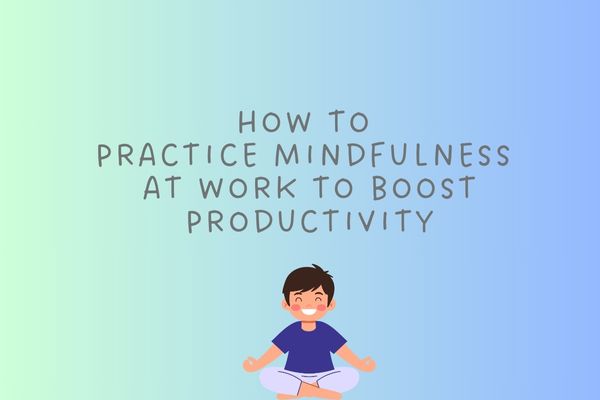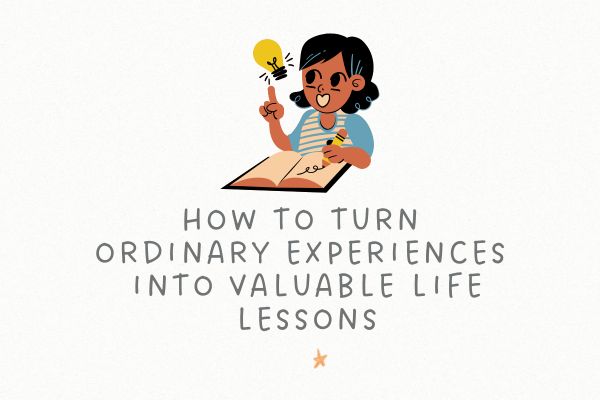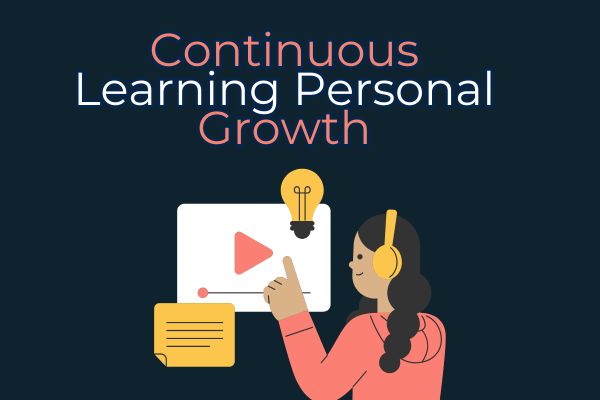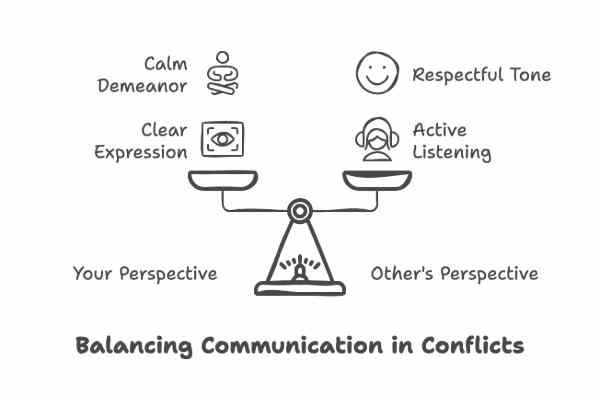In today’s fast-paced corporate environment, the mind often resembles a browser with countless tabs open—each demanding immediate attention, each contributing to an overwhelming sense of digital chaos. Amidst this constant barrage of information, meetings, deadlines, and notifications, the practice of mindfulness emerges as a beacon of clarity and focus. But what exactly does it mean to be mindful at work, and how can this ancient practice enhance our modern professional lives?
Chapter 1: Understanding Workplace Mindfulness
The Modern Workplace Challenge
The contemporary workplace presents unique challenges to our attention and well-being. The average professional switches tasks every three minutes, with each interruption requiring an additional 23 minutes to regain complete focus. This constant context-switching not only diminishes productivity but also increases stress levels and mental fatigue.
Mindfulness—the practice of maintaining moment-to-moment awareness of our thoughts, feelings, bodily sensations, and surrounding environment—offers a powerful antidote to this fragmented attention. By training ourselves to remain present and aware, we can navigate workplace challenges with greater clarity, purpose, and efficiency.
The Science Behind Mindfulness at Work
Research in neuroscience has revealed that regular mindfulness practice can literally reshape our brains. Studies using MRI scans have shown increased gray matter density in regions associated with learning, memory, emotional regulation, and perspective-taking—all crucial skills in the professional environment.
Moreover, workplace mindfulness programs have demonstrated impressive results:
- A 28% reduction in stress levels
- A 20% improvement in sleep quality
- A 68% decrease in work-related rumination
- A 46% increase in innovation and creative problem-solving
Chapter 2: Core Principles of Workplace Mindfulness
Present-Moment Awareness
The foundation of mindfulness at work lies in cultivating present-moment awareness. This means fully engaging with whatever task is at hand, rather than allowing the mind to wander to past events or future concerns. When reviewing a document, you’re fully absorbed in its contents. When participating in a meeting, you’re completely present with the discussion.
This level of presence doesn’t come naturally in our hyper-connected world. It requires conscious effort and regular practice. However, the benefits of this focused attention are profound: increased accuracy, improved comprehension, and reduced errors in our work.
Non-Judgmental Observation
Another crucial aspect of workplace mindfulness is developing the capacity for non-judgmental observation. This means noticing thoughts, emotions, and situations without immediately labeling them as “good” or “bad.” When a challenging email arrives, instead of immediately reacting with stress or anxiety, you observe your response with curiosity and detachment.
This non-judgmental stance allows for:
- Clearer decision-making
- Reduced emotional reactivity
- Better interpersonal relationships
- Enhanced problem-solving capabilities
Intentional Response vs. Automatic Reaction
Mindfulness creates a space between stimulus and response. Instead of automatically reacting to workplace triggers—whether they’re difficult colleagues, tight deadlines, or technical frustrations—mindfulness allows us to pause, observe, and choose our response intentionally.
This pause, though brief, can be transformative. It enables us to:
- Assess situations more objectively
- Consider multiple perspectives
- Choose more effective responses
- Maintain professional composure
Chapter 3: Practical Mindfulness Techniques for the Workplace
The Mindful Morning Routine
The foundation for a mindful workday begins before you enter the office or log in to your first virtual meeting. Establishing a mindful morning routine sets the tone for focused, intentional work throughout the day.
The 10-Minute Morning Practice:
- Upon waking, take three conscious breaths
- Spend 5 minutes in quiet meditation or reflection
- Set your intention for the workday
- Review your schedule mindfully
- Prepare your workspace with purpose
Mindful Transitions Between Tasks
One of the most challenging aspects of modern work is the constant switching between tasks. Each transition represents an opportunity to either scatter our attention or reinforce our mindful awareness. Implementing mindful transitions can significantly improve both productivity and mental clarity.
The 3-Breath Transition Technique: Before moving from one task to another, pause for three conscious breaths:
- First breath: Acknowledge the completion of the previous task
- Second breath: Clear your mental workspace
- Third breath: Set your intention for the next task
This simple practice creates clear boundaries between activities, reducing mental overlap and the cognitive residue that often impairs performance on subsequent tasks.
Chapter 4: Mindfulness for Enhanced Focus and Concentration
The Pomodoro Technique with a Mindful Twist
The popular Pomodoro Technique—working in focused 25-minute intervals followed by short breaks—becomes even more powerful when combined with mindfulness practices. Here’s how to implement this enhanced version:
Mindful Pomodoro Protocol:
- Setting Up (2 minutes)
- Clear your workspace physically and digitally
- Set a clear, specific intention for the work period
- Take three mindful breaths to center yourself
- During the Work Period (25 minutes)
- Maintain gentle awareness of your posture and breath
- When distractions arise, acknowledge them without judgment
- Gently return focus to the task at hand
- Notice any tension or resistance without trying to change it
- During Breaks (5 minutes)
- Stand and stretch mindfully
- Perform a brief body scan
- Practice gratitude for the work accomplished
- Reset your environment for the next session
Deep Work Through Mindful Immersion
Deep work—the ability to focus without distraction on cognitively demanding tasks—is enhanced through mindful immersion. This practice involves fully engaging with your work as if it were a meditation object.
Steps for Mindful Immersion:
- Create a distraction-free environment
- Set a clear timeframe for deep work
- Approach the task with curiosity and openness
- Notice the sensory experience of working
- Maintain peripheral awareness of your body and breath
- Return to the task whenever the mind wanders
Chapter 5: Mindfulness for Workplace Relationships
Mindful Communication
The quality of our work relationships significantly impacts our productivity and job satisfaction. Mindful communication practices can transform challenging interactions into opportunities for connection and collaboration.
Key Elements of Mindful Communication:
- Present-Moment Listening
- Focus fully on the speaker
- Notice physical sensations while listening
- Observe without planning your response
- Track your emotional reactions without acting on them
- Mindful Speaking
- Pause before responding
- Check your intention
- Notice the impact of your words
- Speak with awareness of tone and body language
- Digital Communication Mindfulness
- Read emails twice before sending
- Practice response delay for emotional triggers
- Set intentional times for email checking
- Maintain awareness of your digital presence
Managing Difficult Workplace Relationships
Even in the most challenging interpersonal situations, mindfulness provides tools for maintaining equilibrium and professional effectiveness.
Mindful Conflict Resolution Protocol:
- Ground yourself through breath awareness
- Acknowledge your emotional state
- Generate compassion for all parties
- Seek to understand others’ perspectives
- Respond rather than react
- Maintain boundaries with awareness
Chapter 6: Mindfulness for Stress Management and Resilience
The Stress Response and Mindful Intervention
Understanding how stress manifests in the workplace is crucial for developing effective mindfulness interventions. The stress response affects us on multiple levels:
Physical Level:
- Muscle tension
- Shallow breathing
- Increased heart rate
- Digestive issues
Mental Level:
- Racing thoughts
- Difficulty concentrating
- Decision-making challenges
- Memory issues
Emotional Level:
- Irritability
- Anxiety
- Overwhelm
- Burnout
Mindfulness provides tools for addressing stress at each of these levels, helping to maintain productivity even under pressure.
Micro-Practices for Stress Management
These brief mindfulness exercises can be performed throughout the workday to manage stress and maintain focus:
- The STOP Technique
- Stop what you’re doing
- Take a breath
- Observe your experience
- Proceed mindfully
- Desktop Meditation
- Focus on your breath for 3 cycles
- Scan your body for tension
- Release obvious areas of holding
- Return to work with renewed awareness
- Mindful Movement at Your Desk
- Gentle neck rolls
- Shoulder circles
- Wrist and ankle rotations
- Mindful stretching
Chapter 7: Creating a Mindful Workspace
The Physical Environment
Our physical workspace significantly impacts our ability to maintain mindful awareness and productivity. A mindfully designed workspace supports both focus and well-being.
Elements of a Mindful Workspace:
- Decluttering with Purpose
- Regular clearing of physical and digital spaces
- Maintaining only essential items within reach
- Creating designated spaces for different activities
- Implementing a “clean desk” policy at day’s end
- Mindful Ergonomics
- Conscious arrangement of workspace elements
- Regular posture checks throughout the day
- Integration of movement opportunities
- Proper lighting and air quality maintenance
- Sensory Awareness
- Managing ambient noise levels
- Incorporating natural elements
- Controlling visual distractions
- Maintaining comfortable temperature
Creating Mindful Transitions in Space
Different areas of your workspace can be designated for different types of work, helping to maintain focus and presence:
- Focus Zones
- Dedicated area for deep work
- Minimal distractions
- Clear visual boundaries
- Proper tools readily available
- Collaboration Spaces
- Open areas for team interaction
- Comfortable seating arrangements
- Appropriate technology for sharing
- Good acoustics for communication
- Renewal Spaces
- Quiet areas for reflection
- Natural light when possible
- Comfortable seating for breaks
- Plants or other natural elements
Chapter 8: Mindfulness for Creative Problem-Solving
The Mindful Innovation Process
Creativity flourishes in a mind that’s both focused and flexible. Mindfulness practices can enhance creative problem-solving by fostering both these qualities.
Stages of Mindful Innovation:
- Preparation
- Clear mental space through brief meditation
- Define the problem without judgment
- Gather necessary information mindfully
- Notice initial assumptions and biases
- Incubation
- Allow ideas to emerge naturally
- Practice open awareness meditation
- Notice without forcing solutions
- Embrace uncertainty
- Insight
- Maintain receptivity to new ideas
- Record insights without judgment
- Notice physical sensations of “aha” moments
- Stay present with emerging solutions
- Verification
- Test solutions with mindful attention
- Observe results objectively
- Adjust approaches with flexibility
- Learn from both success and failure
Mindful Brainstorming Techniques
Individual and group brainstorming sessions benefit from mindful approaches:
- Silent Brainstorming
- Begin with a mindfulness exercise
- Write ideas without self-censoring
- Notice but don’t judge emerging thoughts
- Stay present with the creative process
- Mindful Group Ideation
- Establish ground rules for presence
- Practice active, mindful listening
- Build on ideas without judgment
- Maintain awareness of group dynamics
Chapter 9: Digital Mindfulness and Technology Use
Mindful Technology Integration
In our hyper-connected world, maintaining mindful awareness while using technology is crucial for productivity and well-being.
Principles of Digital Mindfulness:
- Intentional Usage
- Set specific times for email checking
- Implement “tech-free” periods
- Use apps mindfully and purposefully
- Regular digital decluttering
- Notification Management
- Audit and reduce notifications
- Create sacred spaces for focus
- Establish boundaries with technology
- Practice regular digital detox
- Mindful Online Communication
- Read messages thoroughly before responding
- Practice empathy in digital interactions
- Consider timing and impact of communications
- Maintain professional presence online
Tools for Digital Mindfulness
Certain technologies can support rather than hinder mindful work practices:
- Mindfulness Apps
- Meditation timers
- Focus-tracking tools
- Break reminders
- Mindful movement prompts
- Productivity Enhancement
- Website blockers
- Time-tracking software
- Task management systems
- Digital wellness tools
Chapter 10: Building Sustainable Mindfulness Habits
Creating a Mindful Work Routine
Sustainable mindfulness practice requires integration into daily work routines.
Components of a Mindful Workday:
- Morning Preparation
- Mindful morning routine
- Commute meditation
- Workspace setup ritual
- Daily intention setting
- Workday Structure
- Regular mindfulness breaks
- Transition practices
- Meeting preparation rituals
- End-of-day reflection
- Evening Integration
- Work-life transition practice
- Gratitude reflection
- Next-day preparation
- Mindful unwinding
Chapter 11: Real-World Success Stories and Case Studies
Case Study 1: The Tech Startup
Sarah Chen, founder of a rapidly growing software company, implemented mindfulness practices across her 50-person team.
Implementation Strategy:
- Daily 10-minute team meditation sessions
- Mindful meeting protocols
- Designated quiet spaces
- Regular mindfulness training
Results After Six Months:
- 35% reduction in reported stress levels
- 28% increase in team productivity
- 45% decrease in conflict-related HR issues
- 22% improvement in employee satisfaction scores
Case Study 2: The Corporate Law Firm
Henderson & Partners introduced mindfulness practices to combat attorney burnout and improve client service.
Key Initiatives:
- Mindfulness-based stress reduction program
- Mindful billing practices
- Communication training
- Work-life balance protocols
Measured Outcomes:
- 40% reduction in stress-related sick days
- 25% improvement in client satisfaction scores
- 30% decrease in billing errors
- Increased retention of junior associates
Chapter 12: Troubleshooting Common Challenges
Challenge 1: Resistance to Practice
Many professionals encounter initial resistance to mindfulness practices. Common objections include:
- “I don’t have time”
- “My mind is too busy”
- “This isn’t productive”
- “It feels uncomfortable”
Solutions:
- Start with micro-practices (1-2 minutes)
- Focus on practical benefits
- Use evidence-based approaches
- Build gradually on small successes
Challenge 2: Maintaining Consistency
Establishing and maintaining a regular mindfulness practice often proves challenging in busy work environments.
Strategies for Consistency:
- Integration with Existing Routines
- Link practices to regular activities
- Use environmental cues
- Create accountability systems
- Track progress visually
- Overcoming Common Obstacles
- Prepare for busy periods
- Develop flexible practice options
- Build support networks
- Adjust expectations realistically
Also check: 10 Everyday Activities You Can Turn into Mindfulness Practices
Chapter 13: Measuring Success and Tracking Progress
Quantitative Metrics
Tracking specific metrics can help validate the impact of mindfulness practices:
- Productivity Measures
- Task completion rates
- Project timeline adherence
- Error rates
- Response times
- Wellness Indicators
- Stress levels (measured through surveys)
- Sick days taken
- Sleep quality
- Energy levels
Qualitative Assessments
Subjective measurements provide valuable insights into the effectiveness of mindfulness practices:
- Self-Assessment Tools
- Daily mindfulness journals
- Weekly reflection exercises
- Monthly progress reviews
- Quarterly goal evaluations
- Team Feedback Mechanisms
- Peer observations
- Client feedback
- Team climate surveys
- Leadership assessments
Chapter 14: Advanced Mindfulness Practices for Leadership
Mindful Leadership Principles
Leaders who embody mindfulness create more effective and harmonious work environments.
Core Practices for Leaders:
- Presence in Leadership
- Embodying full attention
- Demonstrating emotional awareness
- Practicing authentic communication
- Modeling work-life balance
- Strategic Pause
- Before important decisions
- During conflict resolution
- When receiving feedback
- In times of change
- Compassionate Leadership
- Understanding team challenges
- Supporting individual growth
- Creating psychological safety
- Fostering inclusive environments
Creating a Mindful Organization
Leaders can foster organizational mindfulness through systematic approaches:
- Cultural Integration
- Embedding mindfulness in values
- Supporting practice opportunities
- Recognizing mindful behaviors
- Measuring cultural impact
- Structural Support
- Providing resources and training
- Creating supportive policies
- Designing mindful workspaces
- Establishing clear guidelines
Conclusion: The Future of Workplace Mindfulness
As we continue to navigate increasingly complex and demanding work environments, the integration of mindfulness practices becomes not just beneficial but essential for sustainable success. The practices and principles outlined in this guide provide a comprehensive framework for developing greater presence, focus, and effectiveness in the workplace.
Remember that mindfulness is not a destination but a journey—one that unfolds differently for each individual and organization. The key is to begin where you are, proceed with patience and consistency, and allow the benefits to emerge naturally through regular practice.
By incorporating these mindfulness practices into your daily work routine, you’re not just improving your own productivity and well-being—you’re contributing to the creation of more mindful, effective, and harmonious workplaces for everyone.





